
Whitewater Ontario
Policy Manual
Item:
Conversion of whitewater paddling potential to hydro power supply
Date: 2007 03 12
Organizations Affected:
Ontario Power Authority Supply Planners, IPSPsubmissions@powerauthority.on.ca.
Approved by Whitewater Ontario Executive: Not yet approved
Review Dates:
Preamble
Whitewater Ontario, a not-for-profit organization under the umbrella
of Canoe Ontario serves as the voice of paddlers' interests to government and business. We are the designated provincial whitewater sport paddling organization and owner/operator of the Minden Wild Water Preserve in Minden. We have a membership of around 500 active members, 6 active clubs, and 25 corporate members across the province.
We believe that the best development is one which takes into consideration the multiple values of a resource. Whitewater Ontario is very interested in all aspects of river development which may impinge upon the traditional rights of whitewater recreational and commercial paddlers.
Our organization wants to increase access to whitewater resources and work cooperatively to develop whitewater recreation opportunities in Ontario and Canada.
Navigability
Rivers must be regarded as public navigable rivers in law when they are navigable in fact. And they are navigable in fact when they are used, or are susceptible of being used, in their ordinary condition, as highways for commerce, over which trade and travel are or may be conducted in the customary modes of trade and travel on water - this definition has been expanded to include recreational whitewater paddling use.
1. A river is regarded as a “public navigable river” if it is susceptible of being used in its ordinary condition as a highway for commerce over which trade and travel are or may be conducted in the customary modes of travel and trade on water.
2. A river that is navigable in fact is navigable in law.
3. The test of navigability, as applied to “navigable waters,” is the capability of being used for useful purposes of navigation, of trade and travel in the usual & ordinary modes, and not the extent and manner of such use.
The beds of rivers flowing through public lands are usually owned by either the federal or provincial government. These rivers are open for public use, and subject only to regulation by the agency managing the adjacent lands.
Legal cases have established the fundamental understanding that the management of public natural resources must avoid substantial impairment of natural resources, the appearance of discrimination between competing uses, and implementation of discriminating fees.
Furthermore, despite the recent advertising and promotional campaigns by Ontario Power Generation Corp, (OPG) There is no evidence that recreational canoe and kayak access downstream of dams poses a security risk and further, in the case of Les Amis de la Riviere Kipawa vrs. the attorney General there is no evidence that navigating the sluice of a properly designed water control sluiceway is dangerous.
Whitewater enthusiasts are often stereotyped as mindless thrill-seekers with a death wish. The reality is quite different. Paddlers represent a true cross-section of our society and include many highly educated professionals. They know the limits of their skills, and by choosing what rapids they run, they control the intensity of their experience. It is a life-long sport that nurtures a love for wild places and an appetite for low-impact, human powered travel. Extreme paddlers are especially calculating when exposing themselves to danger. Today 28% of all Canadians currently participate in – or intend to participate in – this type of activity.
Whitewater paddlers, like other risk sport enthusiasts, approach their activity with a focus and intensity not often found in traditional outdoor recreation. They’re aware of the dangers and take concrete steps to avoid them. They purchase highly specialized equipment and work hard to develop the skills they need. They condition themselves mentally and physically and learn first aid and rescue skills before setting out. They have a strong sense of personal responsibility and a full understanding of the consequences of their actions. Drug and alcohol abuse is quite rare. Because of their expertise and involvement the actual risks they face are not much more than those encountered by inexperienced people in traditional outdoor recreation slightly fewer deaths than rock climbing and slightly more deaths than recreational swimming.
Natural Rivers
Whitewater Ontario opposes modifications to natural, free-flowing rivers, to rivers that have been designated as wild or scenic, and to rivers which have been named by managing agencies as eligible or suitable for such designation.
Case by Case Decisions
Whitewater Ontario views proposals for river modification with caution, recognizing that changes, once made, may be difficult or impossible to unmake and in many cases may create new and often more dangerous conditions. Whitewater Ontario may oppose, not oppose, or endorse proposed modifications to rivers depending upon the specific needs, impacts and details associated with this action. Whitewater Ontario may assist with planning or funding of river modifications if it endorses those modifications.
Authority
Guided by this River Modification Policy, Whitewater Ontario will either support or not support proposed river modifications. Before choosing to endorse a river modification, the President will consult with the appropriate Committees and seek ratification by the Executive of Whitewater Ontario.
No Harm Policy
Whitewater Ontario will oppose proposals for river modifications unless it has reason to believe that the proposed modification will not adversely impact the enjoyment of rivers by other recreational groups and will not have a significantly adverse effect on the riverine ecosystem.
Categories of Modifications
Whitewater Ontario considers modifications to rivers associated with recreational paddling to be for one of three purposes: for enhancing safety, improving navigability, or enhancing recreational opportunities.
Enhancing Safety
Modifications for the purpose of enhancing safety include changes that remove or reduce objective dangers, such as demonstrated entrapment hazards. A decision by Whitewater Ontario in favor of safety modifications is more likely if
(a) the modification does not change the physical or visual characteristics of a rapid,
(b) the river receives a high level of use, and
(c) the hazard in question has been demonstrated to cause drownings or near drownings.
Improving Navigability
Whitewater Ontario opposes river modifications for the purpose of improving navigability including changes to rapids that make passage of boats easier or that reduce the difficulty rating of rapids.
The organization recognizes that portaging is usually an option for avoidance of specific obstacles and that advances in technique, skill, and equipment have historically made impossible rapids possible and difficult rapids routine.
Presently, unrunnable or difficult rapids are tomorrow’s first descents or play spots.
It is Whitewater Ontario's position that there is a firm distinction to be made between improvements for the purpose of improving navigability and those made for reduction of objective hazards.
For this reason, a proposed modification to remove a subjective hazard (such as a wave that routinely flips rafts) or to reduce the overall difficulty of a rapid is considered by Whitewater Ontario as a modification for the purpose of improving navigability rather than safety.
Enhancing Recreational Opportunities
Modifications for the purpose of enhancing recreational opportunities range from moving a few rocks to enhance a play hole to the construction of a completely artificial whitewater race course. A decision by Whitewater Ontario on proposed recreational enhancements hinges on the degree of previous modification of the river, the degree of terrestrial development along a river, impact of the proposal on the riverine and riparian ecosystems, and impact on enjoyment or future enjoyment by other recreational users. For example, Whitewater Ontario would oppose modifications for recreational enhancement of a pristine, wilderness river, but might choose to endorse the construction of a play hole in a highly modified, urban river.
Artificial Structures Obstructing Navigability
Whitewater Ontario opposes construction of structures or artificial placement of natural and synthetic materials which may interfere with navigation. These structures include but are not limited to dams, weirs, bridges, fences, and fish habitat structures.
At existing low head dams, Whitewater Ontario advocates dam removal or modification for safe passage. In cases where modifications are not possible, Whitewater Ontario advocates availability of portage routes.
Stakeholder Involvement and Agency Approval
Whitewater Ontario will not endorse river modifications on whitewater rivers which do not seek public input and comment. Public comment must include Whitewater Ontario, local whitewater clubs, and other local regional and national river recreation and conservation organizations. Whitewater Ontario will also not endorse any river modification proposal that has not obtained the necessary managing agency permission prior to construction.
In general, Whitewater Ontario opposes river modifications made without consultation with a broad spectrum of user groups or made without agency authorization and which have not made signficant and best efforts to mitigate environmental effects on whitewater navigation.
Whitewater Ontario would like to be directly notified, via email dispatches, of pending river development projects that may impinge upon traditional whitewater paddling activities including bridges, or dams, which may curtail traditional navigation as described under the Navigable Waters Protection Act and any shore side development which may curtail traditional access and portage rights.


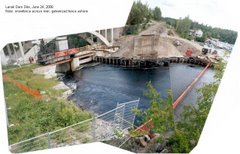

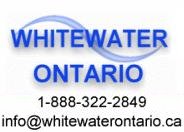
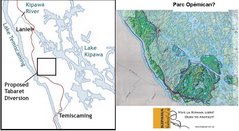

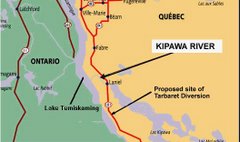

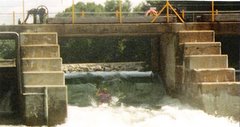





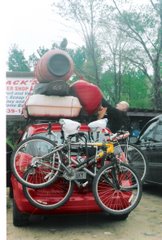

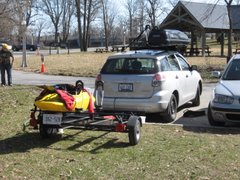

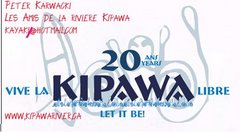
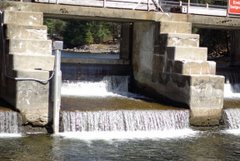


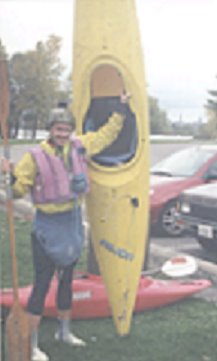



No comments:
Post a Comment